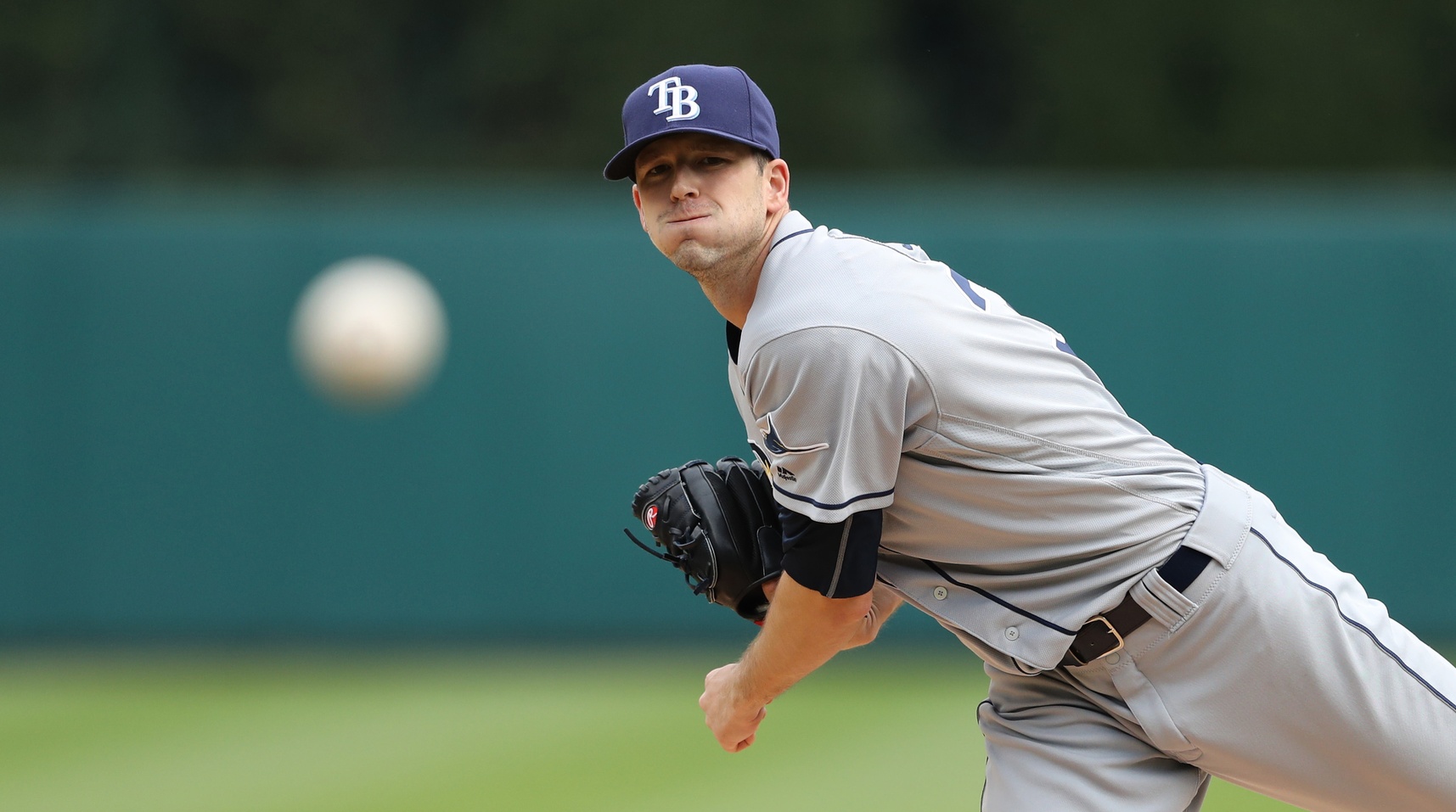It’s mid-December, the Winter Meetings are underway, and the Cubs have already inked three pitchers to multi-year contracts. Two of those signings—Tyler Chatwood and Brandon Morrow—are primarily for 2018, as the Cubs found themselves with glaring holes in both the rotation and the bullpen, but the third positions them well for 2019. That’s because Drew Smyly, who signed a two-year, $10 million contract with the club on Tuesday, will likely miss almost all of 2018 due to Tommy John surgery.
Smyly, who is signing his first free-agent contract after being non-tendered, spent 2017 in the Mariners system, his third major-league organization. Two years after coming up with Detroit as a top prospect in 2012 (those with longer memories will recall rumors of the Cubs’ interest in the lefty while he was with the Tigers), Smyly found himself dealt to Tampa Bay as part of the David Price, eventually winding up in Seattle as a result of Jerry Dipoto’s wheeling and dealing last winter. It’s been a long journey for the former second rounder, and the surgery on his elbow in June set him back, surely to his frustration. Reading the injury updates from earlier this year are an exercise in disappointment, as a flexor strain in his left elbow sidelined him for months before Smyly finally tore his UCL after months of attempting to get back on the mound.
With the Cubs, he’ll receive an interesting opportunity. Smyly will rehab through most, if not all, of the 2018 season, with a shot at the rotation in 2019. That means he will compete with Tyler Chatwood, Mike Montgomery, and any other starters the Cubs compile over the next calendar year. Incumbent starters Kyle Hendricks, Jon Lester, and Jose Quintana will remain in the rotation, so this is a savvy move on both the part of the club and the part of Smyly. There’s little pressure on Smyly to return from injury quickly, and the Cubs don’t have to count on him to make the rotation even when he does return. Jed Hoyer did allude to the possibility of Smyly becoming a bullpen option down the stretch in 2018, and Smyly thrived in that role before as a 24-year-old in 2013, but this is a move to bolster the rotation, first and foremost.
That’s the situational breakdown, but who is Drew Smyly as a pitcher, and what might we expect when he finally does debut in pinstripes? The left-hander sports four pitches, primarily working off his four-seamer, which he throws almost 60 percent of the time, while using his cutter and curveball as out pitches to both lefties and righties. A changeup shows up versus right-handers, but only rarely. Those four pitchers are differentiated neatly by their velocities, as his four-seamer sits 90-91, his cutter closer to 85, his changeup in the low-80s, and his curve 75-77. It’s a classic lefty profile, really, and Smyly has ridden it to some success in his five seasons.
However, Smyly has also only made 85 starts in those five seasons. He’s reached the 100-inning plateau only twice, and his career-high was 175 ⅓ in 2016, immediately prior to hurting his elbow. That year, he posted an unsightly 4.88 ERA and a 4.83 DRA, the latter about six percent worse than league average. Smyly has been able to produce good strikeout and walk rates, with 23.5 percent and 6.9 percent rates, respectively. That strikeout rate can inch higher in his better stretches, closer to 28 percent, indicating both potential for more success as a starter and the opportunity to become an effective reliever if necessary. Basically, Smyly has either been good or durable, but not both at the same time. His shortened seasons feature better results, while the seasons in which he’s made the lion’s share of his starts have been aggressively average. This inconsistency has produced a career 100.4 DRA-, indicating just how average Smyly has been overall.
One concern is Smyly’s unusually low groundball rate, which is at 36 percent for his career, but dropped to 31.3 percent in 2016. With the juiced baseball poised for a return in 2018 and possibly beyond, such a profile puts Smyly at great risk of giving up loads of home runs. We saw this happen to John Lackey and others in 2017, and league-wide HR/FB percentage ballooned to 13.7 percent this past year. Smyly, in the seasons when he has been primarily a starter, has posted marks at or above league average, topping out at 14.3 percent in 2015. If MLB doesn’t deflate the ball, Smyly might find himself in trouble.
There are reasons to believe that Smyly can be a positive contributor to a future Cubs team, however, and much of that rests on his relative youth, his flashes of success, and his rehab. Smyly is only 28, and so the Cubs will benefit from a pitcher who could still hit his prime. If Smyly does reach that peak later than most pitchers, it wouldn’t be too surprising; he only has 570 ⅓ major-league innings under his belt. Smyly will be afforded as much time as needed to fully recover from his elbow injuries, which is a luxury that most pitchers and their teams do not possess. A fully healthy Smyly is a much more attractive option for the rotation, and there’s hope that he’ll finally put together the results and the durability if he he takes enough time to heal.
Lead photo courtesy Leon Halip—USA Today Sports

Not sure what the jovial title or tone are all about; as a Cub fan, the content of this article is depressing.